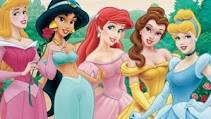As long as there is someone left to tell your story, you will never die.
— African Proverb

DISNEY’S NEGLECTED NICHE
On a visit to the Disney Store when my daughter, Natsumi, was six (circa 2003), she asked me for a princess doll. So as we looked about the Disney Princess Collection section, she noticed the store had no princess doll that looked like her. There was the Asian Princess Mulan, the Persian Princess Jasmine, the Native American Princess Pocohantas, the Latina Princess Esmerelda and there were numerous European princesses, but there was not an African princess.
I found it odd in 21st century America that a progressive company like Disney would lack such representation. When I reflect that 13% of the American population consists of African American consumers who spend in excess of 2.2 billion dollars per year on entertainment and who support Disney, I can only hope that Disney will at the least entertain the idea I submit for a proposed animated feature.
Only after some research about the lack of an African Disney princess did the answer to my and my daughter’s question became obvious. Disney did not have an African princess because Disney had yet to produce an animated feature movie with Africans in it.
To date, the continent of Africa had been the setting for three Disney animated movies: The Lion King, The Lion King II: Simba’s Pride and Tarzan. The Lion King movies contained no humans, though they utilized the voices of African American actors for a few of the parts, and yet there were no images of Africans in the two films. Tarzan was a movie set in Africa with humans, but it contained no Africans.
I was certain I am not the first person to bring this peculiarity to Disney’s attention. In fact, it was safe to conclude that Disney, being the huge, sophisticated, well-managed and multi-faceted company that it is, had a logical rationale about what some segments of the population might interpret as a slight on Disney’s part.
So why was it that Disney had not produced an animated feature set in Africa with Africans in it? It is not for the lack of a market. Disney has profited on movies with main characters that have been Hawaiian in Hawaii, Native American in North America, Chinese in China, Persian in Persia, Gypsy in Spain and Eskimo in Alaska.
An African story would be the first of its kind for an animated feature. Even setting aside the implications relating to the conspicuous absence of such a feature, an African story set in Africa would simply make good business sense. A good story would be profitable at the box office and in the video/DVD market, and millions of persons like me could buy Disney Princess Collection dolls for their daughters about real princesses that look like their daughters. The sad reality is that you can’t buy an African doll in a Disney store.
I realized early on that a potential problem involving such a feature would be chosen subject matter and its treatment. Animated features, after all, are aimed at the young and lucrative 6-year-old to 13-year-old market. Any heavy, dispiriting or controversial subject would be inappropriate for kids, and much of Africa’s history involves potentially controversial subject matter: exploitation, racism, slavery and tyranny.
Still, it is not difficult to navigate through the history of the continent and extract a story that demonstrates the power we all have within to bring about change. Because of its oral tradition, Africa’s stories are exciting, alive and provide valuable lessons of life.
Years earlier, when I took my children to see Mulan, it did not matter to them that the heroine was Chinese, but I believe children all over the world gained respect for Chinese culture and tradition through the insight the feature provided. More than that, Chinese friends of mine expressed pride in seeing their culture celebrated in film. They said their children, who had earlier been embarrassed by their culture, were taking pride in their history and re-exploring fading traditions.
Likewise, African American children should feel proud about traditions carried over from Africa, and an animated feature set in Africa would be a powerful way to accomplish this, as most African American families have a griot. Griot celebrates the oral tradition of Africa, which remains an integral part of African American family life. Beyond that, Griot will encourage all people to remember and retell the stories of their families to younger generations, for according to African tradition: As long as there is someone left to tell your story, you will never die.
And so I submitted this project to Disney, and they decided to do a film featuring a black princess, only their story was not about a “real” princess and did not celebrate African culture. One day I will work with a company that wants to do a children’s film that celebrates something more real for the descendants of Africa all over the world.
